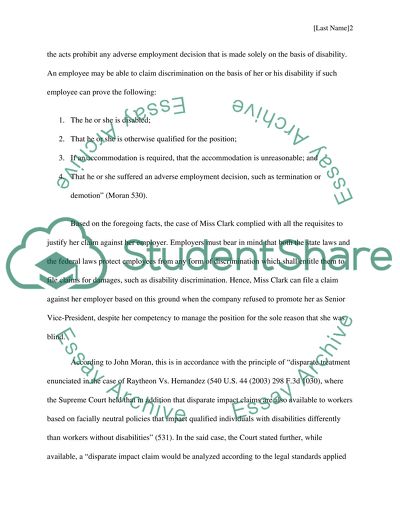Cite this document
(“Employment Law: The American Disability Act Case Study”, n.d.)
Retrieved from https://studentshare.org/law/1418896-employment-law
Retrieved from https://studentshare.org/law/1418896-employment-law
(Employment Law: The American Disability Act Case Study)
https://studentshare.org/law/1418896-employment-law.
https://studentshare.org/law/1418896-employment-law.
“Employment Law: The American Disability Act Case Study”, n.d. https://studentshare.org/law/1418896-employment-law.


